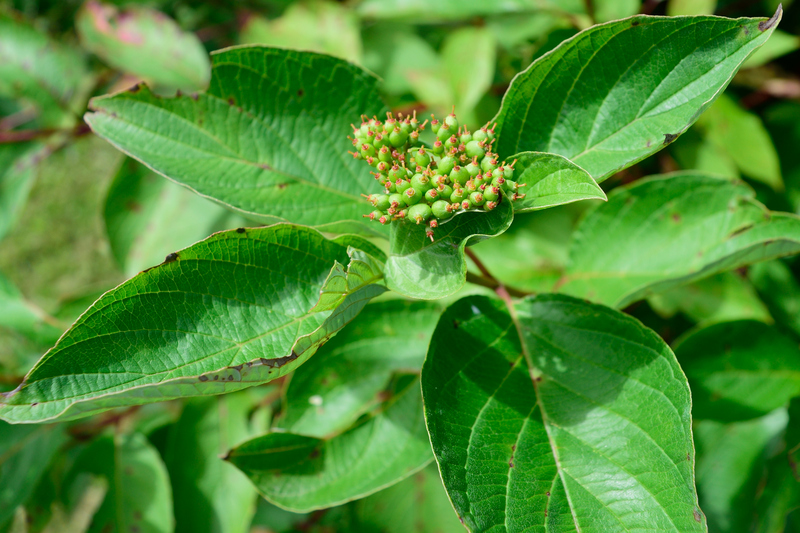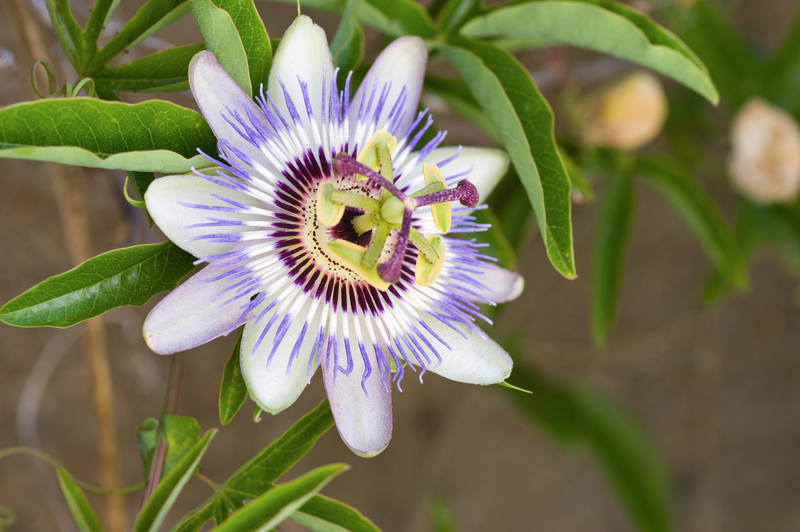Choosing the Right Plants for Your Container Garden
Posted on 30/08/2025
Choosing the Right Plants for Your Container Garden
Your dream of a vibrant, beautiful garden doesn't require expansive land--a container garden is the perfect solution for any space. The art of selecting the best plants for container gardens can transform balconies, patios, and even windowsills into lush retreats. But how do you ensure your container plants not only survive but thrive?
In this comprehensive guide, we'll cover key factors to consider, from plant compatibility and sunlight needs to container size and climate adaptation. Whether you're a beginner or a seasoned gardener, you'll discover essential tips for choosing the right plants for your container garden to enjoy thriving greenery all year long.
Why Container Gardening?
Container gardens unlock endless possibilities for gardeners with limited space or poor soil quality. They offer flexibility, accessibility, and creative expression. With mobile pots and planters, you can experiment with colors, heights, and textures--no need for a traditional backyard!
- Perfect for balconies, patios, and indoor spaces
- Easy to rearrange based on sunlight or season
- Allows for controlled soil, drainage, and feeding
- Reduces weeds, pests, and maintenance

Key Considerations When Selecting Plants for Your Container Garden
1. Sunlight Requirements
The first step to choosing container garden plants is understanding your available sunlight. Examine your space throughout the day for full sun, partial shade, or full shade. Plants fall into three broad categories:
- Full Sun: Require at least 6 hours of direct sunlight daily (e.g., tomatoes, marigolds, petunias)
- Partial Shade: Prefer 3-6 hours of indirect sunlight (e.g., impatiens, begonias, ferns)
- Full Shade: Thrive in less than 3 hours of direct sunlight (e.g., hostas, caladiums, ivy)
Tip: Mismatched sunlight is the number one cause of container gardening disappointment!
2. Size & Growth Habits
Containers come in many shapes and sizes. Choose plants that match your container's depth and width. Fast growers and large species may outgrow small pots and compete for nutrients.
- Compact varieties: Herbs, lettuce, pansies
- Trailing or spilling plants: Sweet potato vine, lobelia, creeping Jenny, nasturtiums
- Upright or centerpiece plants: Dwarf conifers, geraniums, ornamental grasses
Always check labels or do research to ensure your plants will fit long-term in your chosen container.
3. Climate Suitability
Not every plant can tolerate every climate. For the best plant selection for container gardening, consider your USDA Hardiness Zone or local microclimate. Annuals, perennials, succulents, and tropicals all have different tolerances to heat, cold, humidity, and wind.
- Cool-season plants: Pansies, kale, snapdragons, heuchera
- Warm-season plants: Tomatoes, peppers, zinnias, coleus
- Drought tolerant: Sedum, lavender, agave, portulaca
4. Water Requirements
Planters dry out faster than beds in the ground. Group together plants with similar watering needs. For example, succulents prefer dry soil, while impatiens and ferns need constant moisture.
- Drought-tolerant: Succulents, cacti, rosemary
- Thirsty plants: Fuchsias, lobelia, mint
Mismatch of water needs can result in root rot or wilting.
5. Container Type and Drainage
The right container is as important as the right plant. Ensure your pots have adequate drainage holes to prevent overwatering. Choose materials such as terracotta, ceramic, plastic, metal, or wood based on aesthetics and plant preferences.
- Terracotta: Porous, good for dry-loving plants
- Plastic: Lightweight, retains moisture
- Glazed ceramic: Keeps roots cool, holds water
Selecting the right pot avoids root issues and supports healthy plant growth.
Best Types of Plants for Container Gardens
1. Edible Plants for Containers
Fresh produce at your fingertips is one of the joys of container gardening! Many vegetables, herbs, and fruit grow exceptionally well in pots:
- Herbs: Basil, parsley, cilantro, thyme, mint, rosemary
- Vegetables: Tomatoes (dwarf and cherry types), lettuce, radishes, spinach, peppers, bush beans
- Fruits: Strawberries, dwarf blueberries, figs, citrus trees (in large pots)
Choose compact or "patio" varieties bred for container cultivation.
2. Flowering Plants for Vibrant Color
Blooms bring beauty and pollinators to your container garden. Some favorites include:
- Marigolds: Hardy, pest-repellent, cheerful yellow and orange hues
- Petunias: Available in many colors, excellent for trailing and spillover
- Geraniums: Upright or cascading, tolerates heat
- Begonias: Thrive in shade, continuous blooms
- Pansies & Violas: Perfect for cool season color
Mix upright, trailing, and filler flowers for eye-catching containers!
3. Foliage Plants for Texture and Interest
Not all containers need bold blooms. Texture and color from leaves can create stunning displays:
- Coleus: Vibrant, patterned foliage for shade or part sun
- Hostas: Broad leaves, striking patterns, prefer shade
- Ornamental grasses: Add height, movement, and vertical interest
- Sweet potato vine: Fast growing, dramatic trailing leaves
Mix foliage types for an elegant, low-maintenance container garden.
4. Succulents and Cacti for Low-Maintenance Containers
Succulents, cacti, and other drought-tolerant plants are perfect for busy gardeners or sunny, dry spots. They need very little water, love well-draining soil, and offer unique shapes:
- Jade plant, echeveria, sempervivum, aloe vera
- Barrel cactus, agave, opuntia (prickly pear)
Remember to use cactus mix soil and containers with excellent drainage for these unique plants.
5. Seasonal Container Plants
Adapt your plant choices to provide year-round interest in your container garden. Rotate plantings with the seasons for continuous color and harvest:
- Spring: Tulips, daffodils, pansies, spinach
- Summer: Petunias, tomatoes, basil, zinnias
- Fall: Mums, ornamental kale, asters, Swiss chard
- Winter: Dwarf evergreens, pansies (in milder zones), heathers
Combining Plants: The "Thriller, Filler, Spiller" Formula
Achieve a professional look by following the classic "Thriller, Filler, Spiller" approach:
- Thriller: The tall, dramatic centerpiece (e.g. ornamental grass, dwarf shrub, upright flower)
- Filler: The medium-height bushy plants that fill out the arrangement (e.g. coleus, marigold, begonias)
- Spiller: Trailing or cascading plants that drape over the edge (e.g. vinca vine, lobelia, sweet potato vine)
By mixing these plant types, you achieve dimension, visual interest, and balance in your container gardens.
How to Match Plants for Container Success
Step 1: Start with Your Environment
Assess your balcony, porch, or indoor spot for sun exposure, wind, heat, and available space. Match your container garden plant selection accordingly.
Step 2: Pick a Purpose
Do you want an edible garden, a pollinator haven, or a low-maintenance display? Choose plants that fit your lifestyle, taste, and daily routine.
Step 3: Plan for Compatibility
Combine plants with similar light, water, and soil needs. Avoid planting thirsty species with drought-tolerant ones in the same container.
Step 4: Think About Growth
Check expected mature size and pace. Make sure plants won't crowd each other or overpower the container.
Step 5: Consider Color and Texture
Mix foliage types for contrast: combine fine, grassy leaves with broad-leaved plants. Choose a color palette that matches your outdoor decor or home style.

Common Mistakes to Avoid When Choosing Container Garden Plants
- Overcrowding: Plants need room to grow. Use fewer plants or larger containers.
- Poor drainage: Always ensure containers have holes and use appropriate potting mix, not garden soil.
- Mismatched plants: Keep species with similar light and water needs together for harmonious growth.
- Neglecting maintenance: Some plants may need frequent pruning, deadheading, or fertilizing.
- Ignoring mature size: Avoid planting tiny seedlings that will soon outgrow their pot with no room to thrive.
Final Tips for Choosing the Right Plants for Your Container Garden
Successful container gardening hinges on smart plant selection. By keeping in mind factors like sunlight, space, climate, watering needs, and container type, you can create a lush retreat anywhere. Remember to:
- Do your homework before shopping--check plant tags and ask garden center staff for recommendations.
- Start small if you're new; success with a few pots builds skill and confidence.
- Rotate and refresh your plantings each season for continual beauty and bounty.
- Experiment! Finding the perfect combinations takes some trial and error, but it's all part of the fun.
With these guidelines, you are ready to select the ideal plants for your container garden--unlocking beauty, flavor, and nature's joy in any small space!
Frequently Asked Questions about Container Garden Plant Selection
- What are the easiest plants for beginner container gardeners?
Start with herbs (basil, thyme, parsley), marigolds, petunias, and lettuces for easy success. - Can you plant perennials in containers?
Yes! Hostas, heuchera, lavender, and dwarf grasses make excellent perennial container plants. Just be aware of winter protection needs in your region. - How often should I fertilize container plants?
Most container plants need feeding every 2-4 weeks in the growing season, using a balanced water-soluble fertilizer. - How do I keep containers from drying out?
Use mulch, self-watering pots, or group containers together for shared humidity. Choose larger containers, as they hold moisture longer. - What soil should I use?
Always use high-quality potting mix, not garden soil, for optimal drainage and nutrients.
Start planning your stunning container garden today and enjoy the beauty and bounty of green living, no matter where you are!

